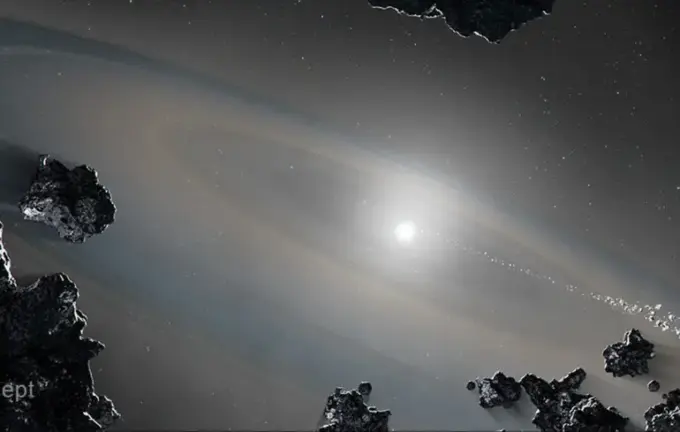Ancient planetary system absorbed by white dwarf sheds light on long-term stellar system stability

Scientists have made an extraordinary discovery by studying one of the oldest and most metal-rich planetary systems ever observed, which is currently being consumed by a white dwarf located at its center.
This system features a disc with remarkable characteristics: it is the oldest and richest in metals among those found around hydrogen-rich stars.
This finding challenges established notions of how long planetary systems last after their stars die.
Researchers note that ongoing accretion indicates the remnants of planets can persist and continue to undergo dynamic changes even long after the star’s death.Led by Erika Le Borde of the Trottier Institute for Exoplanet Research at the University of Montreal, the team also detected an unusual ‘antitail’—a gaseous extension indicating prolonged interactions between the remnants and the star’s evolutionary debris.
Located 145 light-years away, the white dwarf LSPM J0207+3331 boasts an atmosphere contaminated with at least 13 chemical elements, suggesting that gravitational forces tore apart a cosmic body at least 200 kilometers in diameter.Spectroscopic analysis revealed an uncommonly large amount of rocky material still present in this system, hinting that some event disturbed its stability long after the star’s death.
According to Patrick Dufour, from Montreal, this could stem from prolonged tidal disruption processes affecting planetary orbits and debris.
John Debes of the Space Telescope Institute in Baltimore adds that atmospheric pollution indicates that for the past few million years, planets orbiting the star have maintained their orbits despite the star losing mass during its evolution, pointing to long-lasting tidal influences and dynamical interactions that continue long after the main sequence phase ends.These findings open new avenues for understanding the longevity of stellar systems and the presence of planets in later evolutionary stages.
Future research aims to identify planets that may have destabilized their orbits due to interactions with stellar remnants, particularly gas giants, which are challenging to find because of their distance and cold temperatures.
Moreover, the study shows that even after billions of years, systems can retain signs of planetary activity, thus expanding our understanding of celestial evolution over cosmic timescales.

